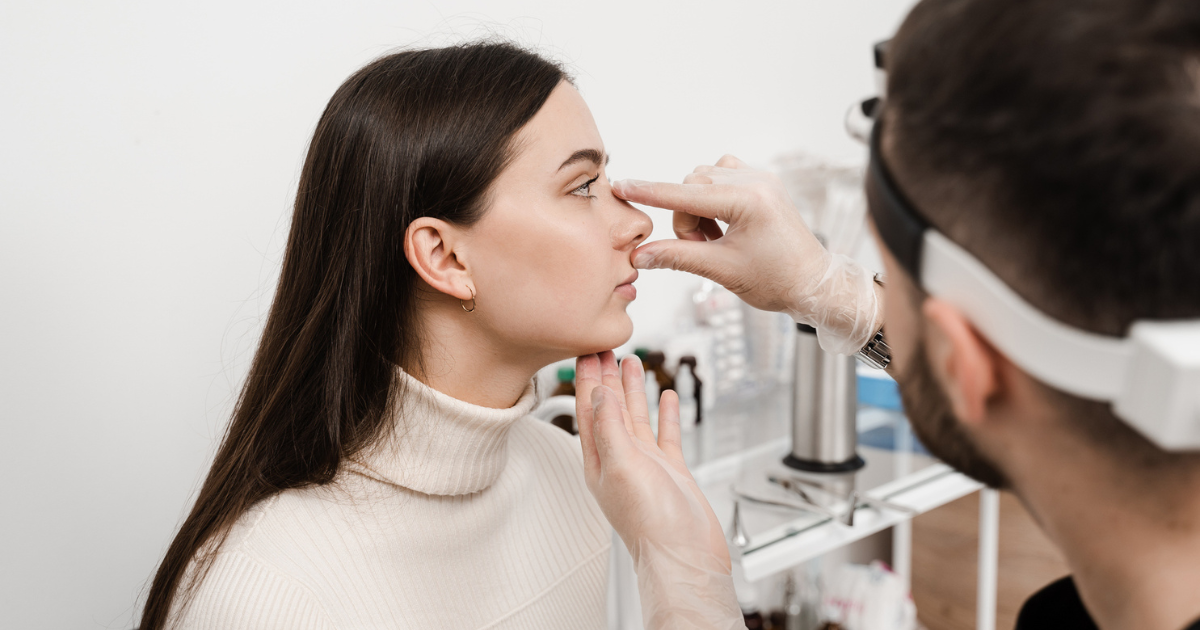Considering a nose job? What you need to know about rhinoplasty

Rhinoplasty is one of the most common facial plastic surgeries. If you want to alter the size, shape or angle of your nose, or if you have a nasal birth defect, injury or breathing issues, it may be right for you.
Below, board-certified plastic surgeon Perry Johnson, MD, discusses what you need to know if you’re considering rhinoplasty.
What is rhinoplasty?
Rhinoplasty is a procedure to reshape the nose or span of the nostrils.
Four reasons for rhinoplasty:
- Cosmetic – Cosmetic rhinoplasty can help refine the nose, narrow the bridge of the nose, remove bony humps, or reshape the nostrils.
- Cosmetic and functional – Some patients undergoing functional nasal surgery to improve breathing also choose to alter the appearance of their nose at the same time.
- Reconstructive – A medically indicated procedure, reconstructive surgery helps repair or restore a nose damaged from an accident or injury. It can also help improve breathing in people with a deviated septum.
- Revision – Some patients undergo revisions to further refine or alter the results of an initial surgery. It’s best to wait until you are fully healed and your swelling has decreased before getting a revision.
Who performs rhinoplasty, and how is it done?
Rhinoplasty is performed by a plastic surgeon. Because the nose is such a central feature of the face, it’s important to choose someone with expertise in this type of surgery and facial artistry.
During your pre-surgery consultation, your surgeon will assess your overall health, explain your surgical options and discuss potential outcomes.
Depending on your situation, your surgeon may perform closed or open-method rhinoplasty.
- A closed method uses incisions within the nostrils to lift the skin
- An open method includes internal incisions and an incision at the base of the nostrils
Before your surgery, you may be given general anesthesia, which causes you to sleep during the procedure, or local anesthesia with sedation to numb and relax you. Incisions are typically closed with dissolvable stitches. Splints are placed inside the nose – with bandages on the outside to support healing – and removed about a week later.
The procedure time will vary. In most cases, you can expect to be done within a few hours. Complex cases and some revisions may take longer.
What is the recovery like?
In most cases, you can go home on the day of your procedure. However, you will need someone to drive you home and, ideally, stay with you for the first night.
You may experience pain, bruising and swelling, especially around the eyes, for seven to 10 days after surgery. Your doctor may prescribe pain medication to keep you comfortable. You should also avoid strenuous physical activity, contact sports and swimming for four to six weeks after rhinoplasty.
How long does rhinoplasty last?
Normal aging may cause gradual changes, but most improvements will be permanent. Therefore, it may be helpful to have digital imaging performed before surgery to see what the changes will look like on your face.
How much does a rhinoplasty cost, and is it covered by insurance?
A rhinoplasty in the Midwest typically costs between $5,000 to $10,000.
A rhinoplasty to correct a traumatic or congenital deformity is usually covered by insurance. It may also be covered if you have a nasal airway obstruction. However, insurance does not cover rhinoplasty solely for cosmetic purposes.







